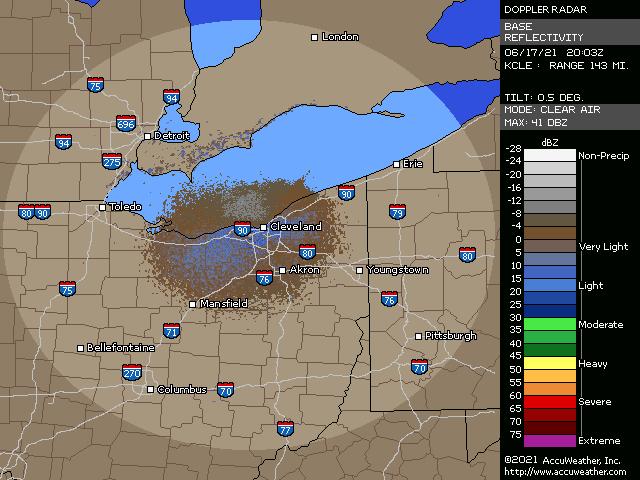

This cut off is arbitrarily set for the software at 135 kilometres (84 mi). The reason for this difference is that the width resolution being angular, at larger range the width of the beam becomes quite large and to obtain a better averaging of data in a resolution volume, one has to increase the number of range pulse bins. In reflectivity, the resolution in distance is 150 metres (500 ft) within 135 kilometres (84 mi) of the radar and 300 metres (1,000 ft) from 135 kilometres (84 mi) to 460 kilometres (290 mi) to the radar. TDWR uses a carrier wave in the frequency band of 5600–5650 MHz (5 cm wavelength), with a narrow beam and angular resolution of 0.5 degrees, and has a peak power of 250 kW. The reason for the resolution is that the TDWR has a narrower beam than traditional radar systems, and that it uses a set of algorithms to reduce ground clutter. The primary advantage of TDWRs over previous weather radars is that it has a finer range resolution-meaning it can see smaller areas of the atmosphere. Funded by the United States Federal Aviation Administration (FAA), TDWR technology was developed in the early 1990s at Lincoln Laboratory, part of the Massachusetts Institute of Technology, to assist air traffic controllers by providing real-time wind shear detection and high-resolution precipitation data. Several similar weather radars have also been sold to other countries such as China ( Hong Kong). As of 2011, all were in-service with 45 operational radars, some covering multiple airports in major metropolitan locations, across the United States & Puerto Rico.

Terminal Doppler Weather Radar (TDWR) is a Doppler weather radar system with a three-dimensional "pencil beam" used primarily for the detection of hazardous wind shear conditions, precipitation, and winds aloft on and near major airports situated in climates with great exposure to thunderstorms in the United States. Another in San Juan, Puerto Rico, is not shown on this map.


 0 kommentar(er)
0 kommentar(er)
